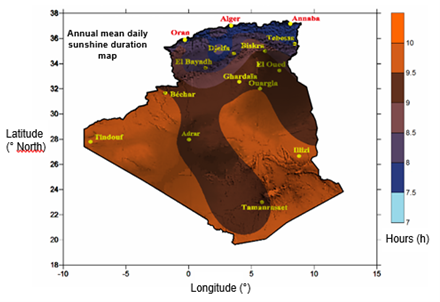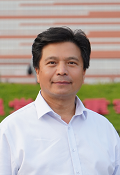Assessing the effectiveness of bioclimatic strategies in improving thermal comfort and reducing energy consumption in a house located in a desert climate
DOI:
https://doi.org/10.18686/cest.v2i3.177Keywords:
bioclimatic strategies; thermal comfort; energy consumption; desert climate; thermal insulation; phase-change materials; natural ventilation; energy billsAbstract
This article examined the effectiveness of bioclimatic strategies to enhance thermal comfort and decrease energy consumption in a desert-climate residence. The study assessed the impact of thermal insulation, natural ventilation, and phase-change materials (PCMs) over a year, with each strategy evaluated both independently and in combination. Monthly energy bills were analyzed to determine the impact of these strategies. The results indicated substantial reductions in energy costs, with decreases of up to 50% during transitional seasons; however, the complete elimination of heating and cooling systems was not feasible due to significant thermal phase differences between indoor and outdoor environments. Further analysis of thermal discomfort hours revealed that increasing insulation thickness during specific seasons could mitigate peak heat intensity and delay its occurrence, thus extending periods of comfort and reducing discomfort hours. Despite these improvements, some periods of thermal distress persisted during the warmest months, underscoring the necessity for a balanced approach to climate adaptation strategies. Overall, the implementation of these strategies proved effective in improving comfort and reducing energy usage in desert-climate homes, although they do not fully negate the need for traditional heating and cooling systems.

Downloads
Published
How to Cite
Issue
Section
License
Copyright (c) 2024 Maamar Hamdani, Mohamed Kamal Cherier, Guermoui Mawloud, Sidi Mohammed El Amine Bekkouche, Belaid Abdelfetah, Zaiani Mohamed, Rachid Djeffal, Saleh Al-Saadi, Ehsan Kamel

This work is licensed under a Creative Commons Attribution 4.0 International License.
References
1. Algérie Presse Service. The construction sector, the largest consumer of energy in Algeria (France). Available online: http://www.aps.dz/economie/85470-le-secteur-du-batiment-premier-consommateurd-energie-en-algerie (accessed on 1 June 2024).
2. Hamdani M, Bekkouche SMEA, Al‐Saadi S, et al. Judicious method of integrating phase change materials into a building envelope under Saharan climate. International Journal of Energy Research. 2021; 45(12): 18048-18065. doi: 10.1002/er.6951
3. Cherier MK, Hamdani M, Guermoui M, et al. Multi‐hour ahead forecasting of building energy through a new integrated model. Environmental Progress & Sustainable Energy. 2022; 41(5). doi: 10.1002/ep.13823
4. M.K. Cherier, S.M.A. Bekkouche, T. Benouaz, S. Belaid, M. Hamdani, N. Benamrane, Energy efficiency and supplement interior comfort with passive solar heating in Saharan climate, Advances in Building Energy Research, 14(1), 2020, 94-114. https://doi.org/10.1080/17512549.2018.1502682.
5. Ayoube A, Maamar H, Yassine M, et al. Improvement of the thermal comfort of building roofs equipped with a phase change materials (PCM) layer under desert weather conditions. 2020 6th International Symposium on New and Renewable Energy (SIENR). Published online October 13, 2021. doi: 10.1109/sienr50924.2021.9631908
6. M. Hamdani, S.M.A. Bekkouche, T. Benouaz, R. Belarbi, M.K. Cherier. Parametric simulations to evaluate the necessary thickness of the massive layer in the soil of building. 2019 IOP Conf. Ser : Earth Environ. Sci. 214 012121 https://doi.org/10.1088/1755-1315/214/1/012121
7. Hamdani M, Aggoune A, Marif Y, et al. Effect of a movable phase change materials (PCMs) layer on lowering energy usage in desert structures. In: Pong P (editor). Renewable Energy Resources and Conservation. Green Energy and Technology. Springer; 2024. doi: 10.1007/978-3-031-59005-4_21
8. Hebbal B, Marif Y, Hamdani M, et al. The geothermal potential of underground buildings in hot climates: Case of Southern Algeria. Case Studies in Thermal Engineering. 2021; 28: 101422. doi: 10.1016/j.csite.2021.101422
9. Hamdani M, Bekkouche S, Benouaz T, et al. A new modelling approach of a multizone building to assess the influence of building orientation in Saharan climate. Thermal Science. 2015; 19(suppl. 2): 591-601. doi: 10.2298/tsci131217026h
10. Álvarez S, Cabeza LF, Ruiz-Pardo A, et al. Building integration of PCM for natural cooling of buildings. Applied Energy. 2013; 109: 514-522. doi: 10.1016/j.apenergy.2013.01.080
11. Osterman E, Butala V, Stritih U. PCM thermal storage system for ‘free’ heating and cooling of buildings. Energy and Buildings. 2015; 106: 125-133. doi: 10.1016/j.enbuild.2015.04.012
12. Zhou G, Yang Y, Wang X, et al. Numerical analysis of effect of shape-stabilized phase change material plates in a building combined with night ventilation. Applied Energy. 2009; 86(1): 52-59. doi: 10.1016/j.apenergy.2008.03.020
13. Xiong Q, Alshehri HM, Monfaredi R, et al. Application of phase change material in improving Trombe wall efficiency: An up-to-date and comprehensive overview. Energy and Buildings. 2022; 258: 111824. doi: 10.1016/j.enbuild.2021.111824
14. Mathis D. Development of new high thermal inertia materials based on wood and bio-sourced phase change materials (France) [PhD thesis]. Laval University; 2019.
15. Delcroix B. Modeling of thermal mass energy storage in buildings with phase change materials [PhD thesis]. University of Montréal; 2015.
16. Aketouane Z, Malha M, Bruneau D, et al. Energy savings potential by integrating Phase Change Material into hollow bricks: The case of Moroccan buildings. Building Simulation. 2018; 11(6): 1109-1122. doi: 10.1007/s12273-018-0457-5
17. Jin X, Medina MA, Zhang X. Numerical analysis for the optimal location of a thin PCM layer in frame walls. Applied Thermal Engineering. 2016; 103: 1057-1063. doi: 10.1016/j.applthermaleng.2016.04.056
18. Wang J, Long E, Qin W, et al. Ultrathin envelope thermal performance improvement of prefab house by integrating with phase change material. Energy and Buildings. 2013; 67: 210-216. doi: 10.1016/j.enbuild.2013.08.029
19. Zhou S, Razaqpur AG. CFD modeling and experimental validation of the thermal performance of a novel dynamic PCM Trombe wall: Comparison with the companion static wall with and without PCM. Applied Energy. 2024; 353: 121985. doi: 10.1016/j.apenergy.2023.121985
20. Anter AG, Sultan AA, Hegazi AA, et al. Thermal performance and energy saving using phase change materials (PCM) integrated in building walls. Journal of Energy Storage. 2023; 67: 107568. doi: 10.1016/j.est.2023.107568
21. Muzhanje AT, Hassan H. Microcapsule geometry and nanomaterial enhancement of PCMs (sp07&sp11) for free heating applications. Case Studies in Thermal Engineering. 2023; 49: 103327. doi: 10.1016/j.csite.2023.103327
22. Kareem BE, Adham AM, Yaqob BN. Experimental analysis of air-multiple pcm heat exchanger in evaporative cooling systems for supply air temperature stabilization. Journal of Building Engineering. 2024; 82: 108269. doi: 10.1016/j.jobe.2023.108269
23. Kareem BE, Adham AM, Yaqob BN. Experimental and numerical investigation of a real-scale air to multiple PCM heat exchanger. Journal of Building Engineering. 2024; 89: 109323. doi: 10.1016/j.jobe.2024.109323
24. Kareem BE, Adham AM, Yaqob BN. Performance Enhancement of a Ventilation System in Hot and Dry Climate Using Air-PCM Heat Exchanger. International Journal of Heat and Technology. 2022; 40(3): 773-780. doi: 10.18280/ijht.400316




.jpg)
.jpg)

